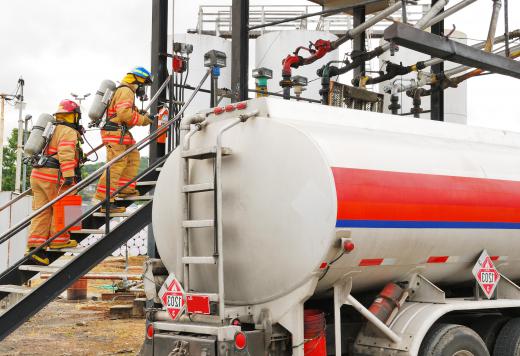A common piece of firefighting equipment, a fog nozzle mechanically breaks water into fine droplets and dispenses them as a fog. Automatically or manually adjusting the nozzle creates spray characteristics that vary in length and width. Trained firefighters use each spray pattern from a fog nozzle under different conditions.
Firefighters typically use fog nozzles with hand held hoses. Water travels through these hoses at rates that may range from 60 to 180 gallons (227 to 681 liters) per minute. The force of the water hitting the special diffusing element within the fog nozzle turns droplets into vapor-like particles. The vapor produced resembles a moist fog and covers a larger surface area than a single stream of water.

An automatic fog nozzle generally adjusts the length and width of the spray emitted based on the water pressure. Manual nozzles have a handle that firefighters use to regulate the spray pattern regardless of water pressure. The nozzle may be adjusted to emit a straight stream of water, a narrow angled cone, or a wide angled cone. The narrow angle fog may also contain a central stream of water. Wide-angle fog not only covers more surface area but also acts as a shield to protect advancing firefighters.
Spray from a fog nozzle is aimed at strategic areas of a burning room. The fog absorbs the heat generated by the fire and becomes steam, displacing the oxygen required by the fire and extinguishing the flame. A fog spray nozzle may be used indirectly or as a combination method of extinguishing fires.
The indirect method requires ceiling temperatures be a minimum of 1,000 degrees Fahrenheit (537 degrees Celsius). This amount of heat ensures that the fog emitted from the hose spray nozzle is immediately converted to steam. Ideally, the room should be enclosed to keep the steam in that location. Lack of ventilation prevents exterior air from entering the environment and refueling the fire. The combination method involves cooling the area and extinguishing the flames simultaneously.
Using the fog nozzle, firefighters generally aim the spray around the perimeter of the room. The fog hits and cools the ceiling, walls, and floor, as the steam generated smothers the flame. A central stream of water might also be used to cool the hot vapor and extinguish the flames at the source.
